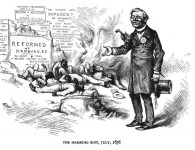Elreta Melton Alexander Ralston was a pioneering attorney who is remembered for defending Charles Yoes, who stood with three other men of raping a white woman, Mary Lou Marion.
Ralston was born in Smithfield, North Carolina. She was the daughter of a Baptist minister and a teacher and grew up comfortably as a part of the black middle class. The descendant of two white grandparents, her bi-racialism formed her early awareness of colorism within the black community.
After high school, Alexander received her Bachelor of Arts from North Carolina Agricultural and Technical University in 1937 at age 19 before going on to become the first African-American woman to graduate from Columbia Law School in 1945. In 1947, she became the first African-American woman to practice law in North Carolina.
She set up practice in Greensboro where she quickly becomes high-respected and a well-known attorney. In 1964, she defended Charles Yoes, who stood with three other men accused of raping a white woman, Mary Lou Marion. The trail went on to become the longest criminal trial in Guilford County court history at the time and changed the county’s jury selection procedures. Ralston was more than a pioneer in the legal field; she was a fierce opponent of the system of racial inequality and segregation known as Jim Crow.
At one time, Ralston represented members of the Ku Klux Klan and credited it with them drifting away from the fold. In 1968, Ralston became the first black woman elected as a district court judge. During her tenure, she created the controversial Judgment Day program, aimed at rehabilitating young, first-time offenders. She later ran for the NC Supreme Court chief justice, losing to James Newcomb a Republican.
Judge Alexander Ralston died on Saturday, March 14, 1998, at the age of 78. She is best remembered for her dedicated her career to civil rights and challenging the status quo of the segregationist South.
sources:
https://www.jstor.org/stable/23524011





















No comments